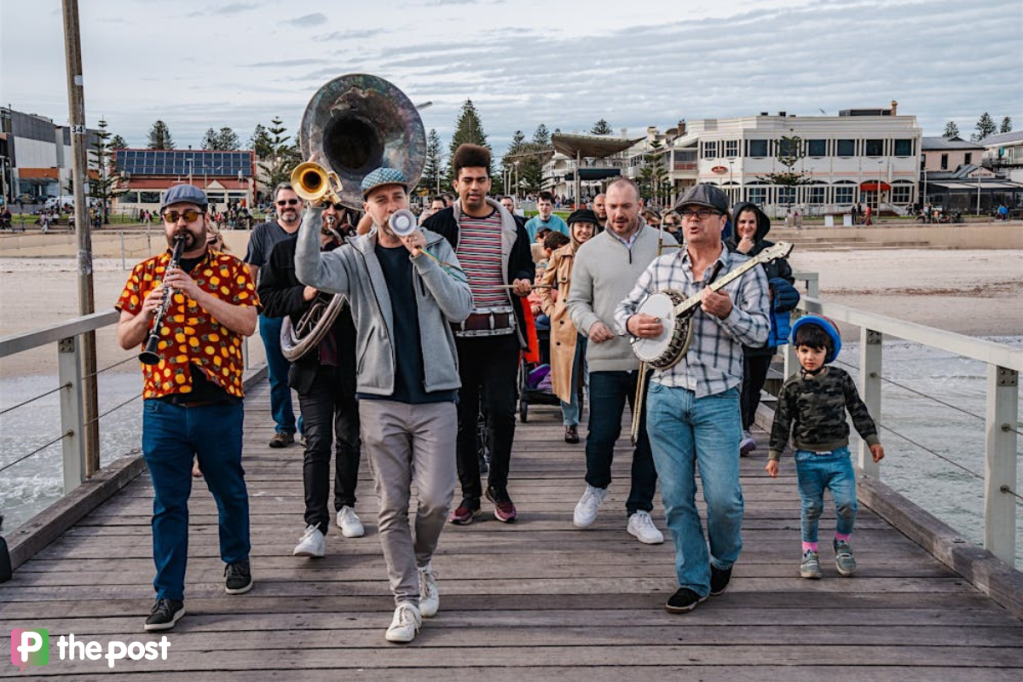Audit slams swim centre project

An audit of the State Government’s $130 million State Aquatic Centre project has exposed a series of flaws and breaches.
The 2012-13 annual report of the Auditor-General details a litany of shifts and changes in the project it describes as high risk.
Approval and financing processes, management and operating arrangements were queried by the State’s financial watchdog.
The audit reviewed the appointment of Candetti Constructions as contractor. It found the process went through significant and fundamental change after Cabinet approval, documents lacked key details, and the decision to choose the lowest bidder involved “the highest risk having regard to the demonstrated capacity to deliver projects of the size and complexity of the contracted works”.
A detailed response by the project manager, the Department of Transport, Energy and Infrastructure (now known as Planning, Transport and Infrastructure), did little to allay the concerns of the auditors.
“The scope of the works and consequently the design and specifications of the project were not settled at the time Cabinet approved the project,” O’Neill’s report found.
“The project was approved without determining an approach tom operating the centre, determining the financial impact of operating the Centre on the State Budget or obtaining the approval for funding for the operations.”
The project has a 12-year history of promises, changes and blow-outs.
The lead contractor, Candetti Constructions, was stuck at the deep end.
It went into voluntary administration in December 2011 owing $7 million.
The debts, mainly to subcontractors, had mounted during construction of the State Aquatic Centre.
The company remains in dispute with the State Government over who should pay for variations in the project.
You might like
The State Opposition seized on the report and demanded action on the failures that saw costs blow out and the lead contractor go into receivership.
“The Auditor-General’s commentary regarding the State Aquatic Centre is extremely concerning and must be followed-up,” shadow infrastructure minister Vickie Chapman said yesterday.
“It is unacceptable that the procurement of a $130 million project was managed so poorly by the State Government.
“(Auditor-General) Mr O’Neill has highlighted that documents do not exist that support the decision to select a tenderer that was the highest risk in regard to delivering a project of that size and complexity.
“The procurement process for the aquatic centre appears to have been flawed and we are now in a situation where there is a legal dispute and small businesses have not been paid.
“On the face of Mr O’Neill’s investigation into the aquatic centre there appears to have been a very sloppy procurement process that involved the Labor Cabinet and for which the Government should be held to account.”
BACKGROUND
A new swimming centre at Marion was first promised in 2001 by Premier John Olsen and re-appeared regularly on the promise sheets of political parties at election time.
Four years later, Premier Mike Rann signed a formal commitment with Marion Council to build an international standard aquatic centre.
It would take another three years before the Rann Government signed a deal in June 2008 for a public private partnership with Aqua43, a consortium of Candetti Constructions as builder and Macquarie Capital as financier and Macquarie leisure as operator.
It was short-lived.
Unsuccessful tenderers raised concerns that Aqua43 had won the tender on the basis of a minimal level of state government contribution and that, after winning the tender, had negotiated significantly increased financial benefits or incentives from the government.
In evidence tendered to a parliamentary committee three years ago, it was revealed that the concerns were raised with Treasury representatives who then sought Crown Law advice.
Before those issues were resolved, consortium partner Macquarie Leisure withdrew and then the whole PPP collapsed in December 2008.
“Of course, this government would have preferred to be able to reach an agreement where the private sector was able to run the swimming pool,” senior minister Paul Holloway told the Legislative Council in February 2009.
“Of course, if the government sector runs it there will be risks. This government has done what it can to reduce that risk.”
Two months later the project was resurrected when then Sport Minister Michael Wright announced: “The state government has awarded a contract to build the state aquatic centre to a South Australian construction company, Candetti Constructions.
“The government is delighted to be working with a South Australian company to deliver the people of this state an international sporting venue, whilst also generating 300 jobs in the process.”
Stay informed, daily
In the following two years the State would learn how difficult it would be to contain the costs of building an aquatic centre.
When the pool opened for business in April 2011, it had escalated from $40 million to $100 million with some unusual additions and a dispute over who should pay for what.
Liberal MP Steven Griffiths smelt a rat in 2011 when he asked then-Infrastructure Minister Pat Conlon to put a figure on the final cost.
“No, I cannot, because we are at present in negotiation with the main contractor about what they believe they should get and what we believe they should get,” Conlon said.
“Sufficient to say that there is a difference of opinion about some costs for delays associated with variations.
“There were major variations in the project because, of course, we added the medical GP Plus centre.
“This was originally, from the former government, going to be a PPP that paid for itself. That did not quite stack up once we got into it.
“The project has had major variations in that it started out as a pool and became, from memory, a pool and a GP Plus Centre.
“What I will say is that there is a disagreement about moneys due to the lead contractor. It probably would not be wise to talk about that until we conclude the process that is set out in the contract for dealing with disagreement.”
Griffiths then asked about the issue of other subcontractors not being paid by the main contractor – something Conlon had been advised of months earlier.
Conlon replied: “I have heard that. Our problem is that those subcontractors are engaged with the main contractor who has the responsibility for it.
“We would not know the detail and I do not think we are entitled to know the detail, except that we are concerned if people are not paid, obviously.
“However, because there is a dispute I am at arm’s length from the process. I will not be involved in the detail.”
Contractor’s representative Eddy Sain told InDaily in December 2011 the issue of unpaid subcontractors had been raised with Minister Conlon in a letter dated May 25, 2011.
“I wrote to Conlon and Hook in May advising them that four subcontractors hadn’t been paid and asking what they were doing about it.
“We got a reply on June 14.
“Regarding the problems experienced by subcontractors, the Department of Transport, Energy and Infrastructure in conjunction with the Crown Solicitor is looking into the matter, he wrote.
“That was the last we heard.”
In November, Steven Griffiths again raised the matter in parliament after the Auditor-General first raised concerns in his annual report.
“At the time of the preparation of this report, Audit was reviewing aspects of the project, including procurement processes, approval and financing processes, final project costs/obligations, and management and operating arrangements,” the Auditor-General had written in 2011.
Replying to Griffiths’ concerns, Conlon was still unwilling to go into detail.
“The project itself still has some things to be completed before the Auditor-General will consequently report on it, for this financial year, next year,” Conlon said.
“In particular—I do not think it is a secret—there is a claim and a dispute between the builder and the government as to the builder’s entitlements to extra payments. I think that is following an arbitration process under the contract at present and will be resolved at some time.”
The centre is now operational and has hosted several major events, although it has had some maintenance issues.
It took nine years from political promise to first swim – two years later it’s been revealed the project was managed poorly – and expensively.








